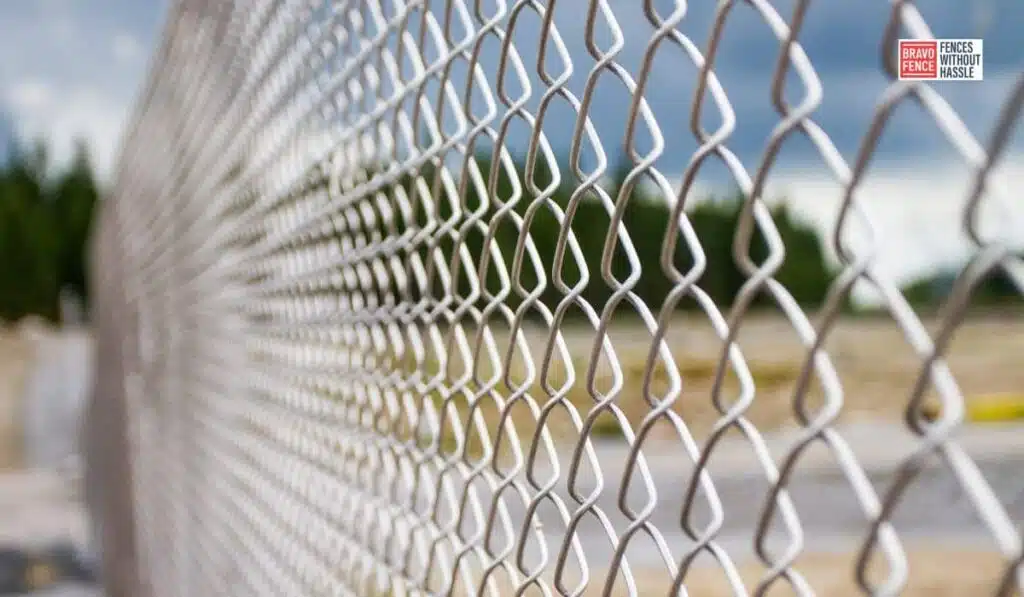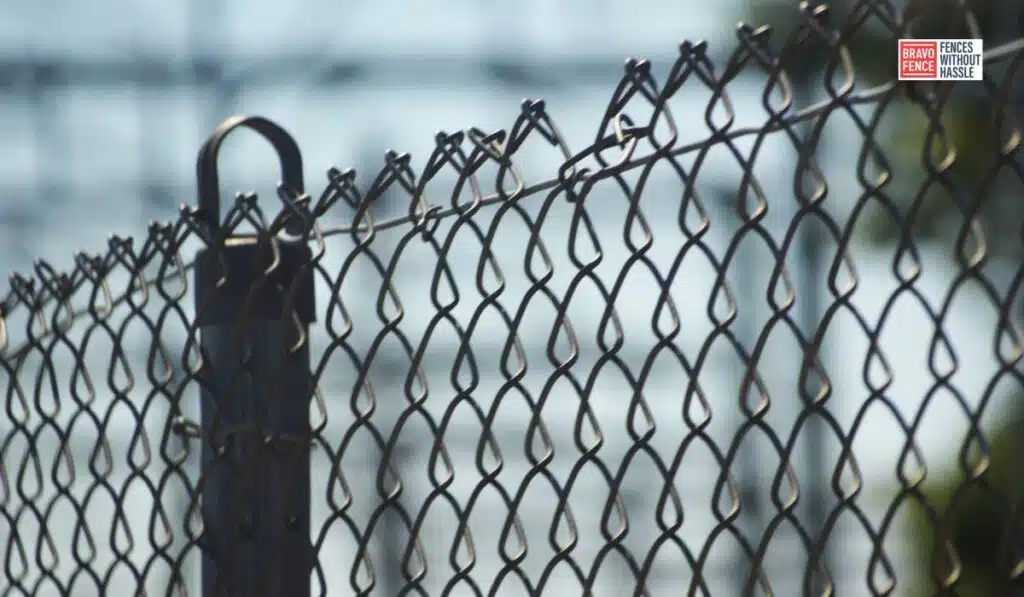
Mending Boundaries: Chain Link Fence Repair Essentials
Chain link fences are a common sight in both residential and commercial properties, serving as sturdy barriers that define boundaries, enhance security, and add aesthetic appeal to outdoor spaces.
However, like any structure, chain link fences are subject to wear and tear over time.
From weathering and rust to accidental damage, various factors can compromise the integrity of these fences.
Fortunately, with the proper knowledge and tools, repairing a chain link fence is a manageable task.
In this article, we’ll explore the essentials of chain link fence repair, empowering you to maintain and restore the functionality and appearance of your property’s perimeter.
Understanding Chain Link Fence Construction
Before discussing repair techniques, it’s essential to understand the basic components of a chain-link fence.
A typical chain-link fence consists of interwoven wires forming a diamond pattern supported by metal posts set into the ground.
The fabric, posts, fittings (such as tension bands, brace bands, and rail ends), and tension wire work together to create a durable enclosure.
Identifying Common Issues

Chain link fences can experience various issues over time, including:
Rust and Corrosion: Exposure to moisture and environmental elements can cause rust and corrosion on metal components, weakening the fence’s structure.
Bent or Damaged Fabric: Impact from falling debris, vehicular accidents, or aggressive vegetation can cause sections of the chain link fabric to bend or break.
Loose or Leaning Posts: Improper installation, ground shifting, or physical damage can cause posts to become loose or lean, compromising the fence’s stability.
Sagging or Tension Issues: Lack of proper tensioning or damage to tensioning components can lead to sections of the fence fabric sagging or becoming slack.
Essential Tools and Materials
Before undertaking any repair work, gather the following tools and materials:
Pliers and Wire Cutters: Essential for cutting and manipulating fence wire.
Wrenches and Socket Set: Necessary for tightening bolts and nuts on fittings.
Post Hole Digger: Required for digging new post holes or repositioning existing ones.
Level: Helps ensure posts and fence fabric are correctly aligned.
Fence Repair Kit: Includes components such as tension bands, brace bands, rail ends, and tension wire.
Rust Converter or Rust Inhibitor: Helps treat and prevent rust on metal components.
Concrete Mix: Needed for securing fence posts in the ground.
Repair Techniques
Once you’ve gathered the necessary tools and materials, follow these steps to repair common chain link fence issues:
Rust and Corrosion Repair:
- Use wire brushes to remove loose rust and debris from affected areas.
- Apply a rust converter or inhibitor to prevent further corrosion.
- For severely rusted sections, consider replacing the damaged components.
Fabric Repair:
- Cut away any damaged sections of chain link fabric using wire cutters.
- Attach the new fabric to intact sections using fence repair kits, ensuring proper tension and alignment.
- Secure the fabric to the fence frame using tension bands and rail ends.
Post Repair:
- If a post is loose, remove any concrete around its base using a post-hole digger.
- Reposition the post and pour new concrete into the hole, ensuring it is level and properly aligned.
- Allow the concrete to set before reattaching the fence fabric and tensioning components.
Tensioning Adjustment:
- Use pliers to tighten tension bands and tension wire as needed to eliminate sagging or slack in the fence fabric.
- Ensure consistent tensioning across the entire length of the fence for optimal performance.
Preventative Maintenance Tips:
- Regularly inspect your chain link fence for signs of damage, rust, or wear.
- Keep vegetation trimmed away from the fence to prevent damage from overgrowth.
- Apply a protective coating or paint to metal components to help prevent rust and corrosion.
- Consider installing a vinyl or polymer coating on the chain link fabric for added durability and weather resistance.
- During harsh weather conditions, such as high winds or heavy snowfall, inspect the fence for any potential damage and make repairs promptly.
Upgrading Your Chain Link Fence:
- If your chain-link fence is showing signs of significant wear or aging, consider upgrading to a higher-quality material, such as aluminum or vinyl-coated chain-link.
- Explore additional features, such as privacy slats or decorative elements, to enhance the appearance and functionality of your fence.
- Consult with a professional fence contractor to discuss your options and determine the best solution for your property’s needs and budget.
Environmental Considerations:
- When performing repairs or upgrades to your chain link fence, be mindful of environmental impact.
- Dispose of any old or damaged materials responsibly, recycling metal components whenever possible.
- Choose eco-friendly rust converters and inhibitors that minimize harm to the environment.
- Consider incorporating sustainable practices, such as using reclaimed materials or native plants, in your landscaping efforts around the fence perimeter.
Safety Precautions:
- When working on chain link fence repairs, always wear appropriate safety gear, such as gloves and eye protection.
- Use caution when handling sharp or heavy materials, and be mindful of potential hazards such as electrical wires or underground utilities.
- If working with concrete, follow proper mixing and handling procedures to avoid injury.
- When digging post holes, call utility companies to locate any buried cables or pipes to prevent accidental damage or injury.
DIY vs. Professional Assistance:

- While many chain link fence repairs can be completed as DIY projects, some tasks may require professional assistance.
- Assess your skills and comfort level with tools and construction techniques before tackling more complex repairs.
- For major repairs or upgrades, such as installing new fence sections or replacing entire posts, consider hiring a qualified fence contractor to ensure the job is done safely and correctly.
Long-Term Benefits of Proper Maintenance:
- Investing time and effort into maintaining your chain link fence can yield significant long-term benefits.
- A well-maintained fence enhances the curb appeal and value of your property, contributing to overall aesthetics and resale value.
- By addressing issues promptly and proactively, you can avoid costly repairs or replacements down the line, saving both time and money.
- Enjoy peace of mind knowing that your property is secure and protected by a reliable and well-maintained fence structure.
Conclusion
Maintaining the integrity of your chain link fence is essential for preserving the security and aesthetics of your property.
By understanding the construction of chain link fences, identifying common issues, and mastering essential repair techniques, you can effectively address any damage or wear that may occur over time.
With the right tools and materials, along with a proactive approach to maintenance, you can keep your chain link fence in top condition for years to come, ensuring it continues to serve its purpose as a reliable boundary and security barrier.
Ready to repair or upgrade your chain link fence? Contact Bravo Fence Company today to schedule a consultation with our expert team.
FAQs
What are chain link fences, and why are they famous?
Chain link fences are prevalent in residential and commercial properties due to their sturdy construction, which defines boundaries, enhances security, and adds aesthetic appeal to outdoor spaces. They are made of interwoven wires forming a diamond pattern, supported by metal posts set into the ground.
What are some common issues that chain link fences face?
Common issues include rust and corrosion on metal components, bent or damaged fabric due to impact, loose or leaning posts caused by improper installation or physical damage, and sagging or tension issues resulting from improper tensioning or damage to tensioning components.
What tools and materials are needed for chain link fence repair?
Essential tools include pliers, wire cutters, wrenches, a socket set, a post-hole digger, and a level. Materials include a fence repair kit containing tension bands, brace bands, rail ends, tension wire, rust converter or inhibitor, concrete mix, and replacement fabric if necessary.
How can rust and corrosion on chain link fences be repaired?
To repair rust and corrosion, use wire brushes to remove loose rust and debris, apply a rust converter or inhibitor to prevent further corrosion, and consider replacing severely rusted components if necessary.
How can damaged chain link fabric be repaired?
To repair damaged fabric, cut away the damaged sections using wire cutters, attach new fabric using a fence repair kit, and secure it to the fence frame using tension bands and rail ends.
What steps are involved in repairing loose or leaning posts?
To repair loose or leaning posts, remove any concrete around the base using a post-hole digger, reposition the post, pour new concrete into the hole, and allow it to set before reattaching the fence fabric and tensioning components.
How can sagging or slack in the fence fabric be addressed?
To address sagging or slack in the fabric, use pliers to tighten tension bands and tension wire as needed to ensure consistent tensioning across the entire length of the fence.
What are some preventative maintenance tips for chain link fences?
Regularly inspect the fence for damage, keep vegetation trimmed away, apply protective coatings to metal components, consider installing a vinyl or polymer coating on the fabric, and make prompt repairs during harsh weather conditions.
What are the environmental considerations when repairing chain link fences?
Dispose of old materials responsibly, choose eco-friendly rust converters and inhibitors, incorporate sustainable practices in landscaping efforts, and be mindful of potential hazards such as buried cables or pipes when digging post holes.
When should I consider hiring a professional for chain link fence repairs?
While many repairs can be done as DIY projects, tasks such as installing new sections or replacing entire posts may require professional assistance. Assess your skills and comfort level before tackling complex repairs, and consider hiring a qualified fence contractor for significant projects.
Tags: Complete Guide to Chain Link Fence Panels, Complete Guide to Chain Link Fence Posts, Complete Guide to Chain Link Fence Supplies, Complete Guide to Chain Link Gate, Everything You Need to Know About Chain Link Fence Materials, Everything You Need to Know About Chain Link Fence Repair, Explore Helpful Resources on Chain Link Fence Accessories, Explore Helpful Resources on Chain Link Fence Colors, Explore Helpful Resources on Chain Link Fence Cost, Inspiration and Tips on Chain Link Fence Privacy, Top Ideas and Insights About Chain Link Fence Installation, Top Ideas and Insights About Chain Link Fencing
